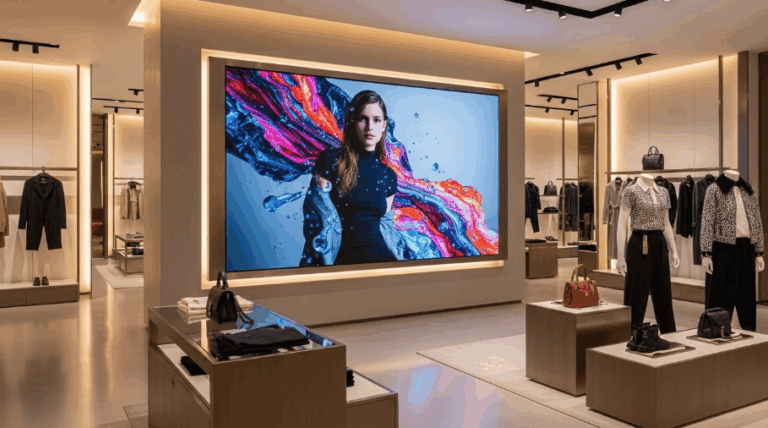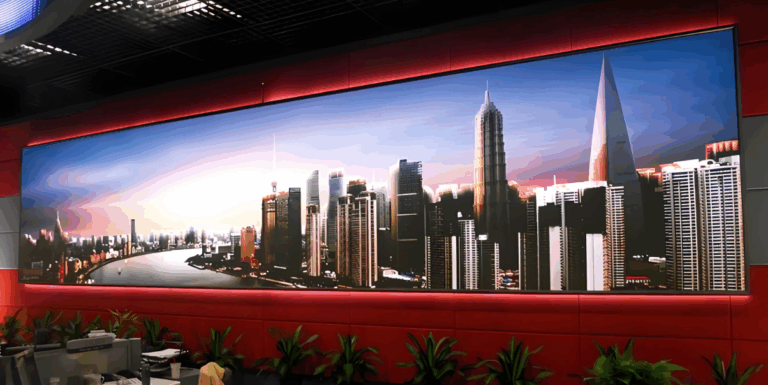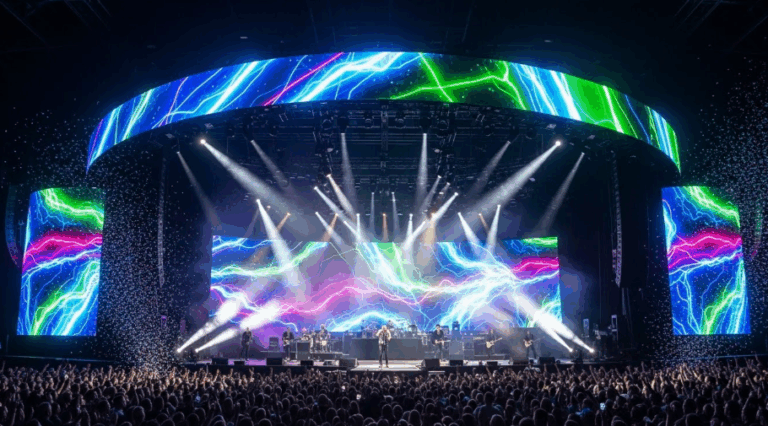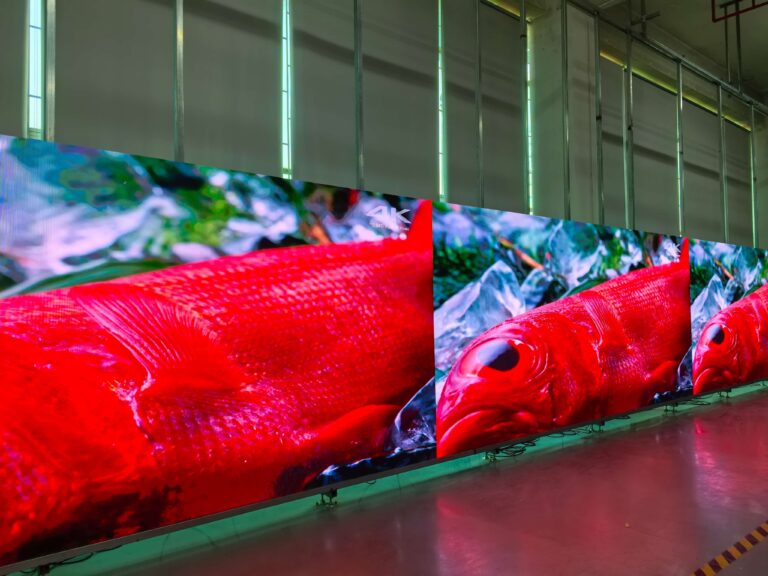Table of Contents
- DIP LED Screen (Dual In-line Package)
- SMD LED Screen (Surface Mount Device)
- COB LED Screen (Chip on Board)
- Technical Comparison Summary
- Conclusion
In the LED display industry, COB, SMD, and DIP are three common display technologies, each with its unique advantages and suitable applications. This article provides a detailed comparison of these three types of screens, helping readers understand their differences, applications, and pros and cons.
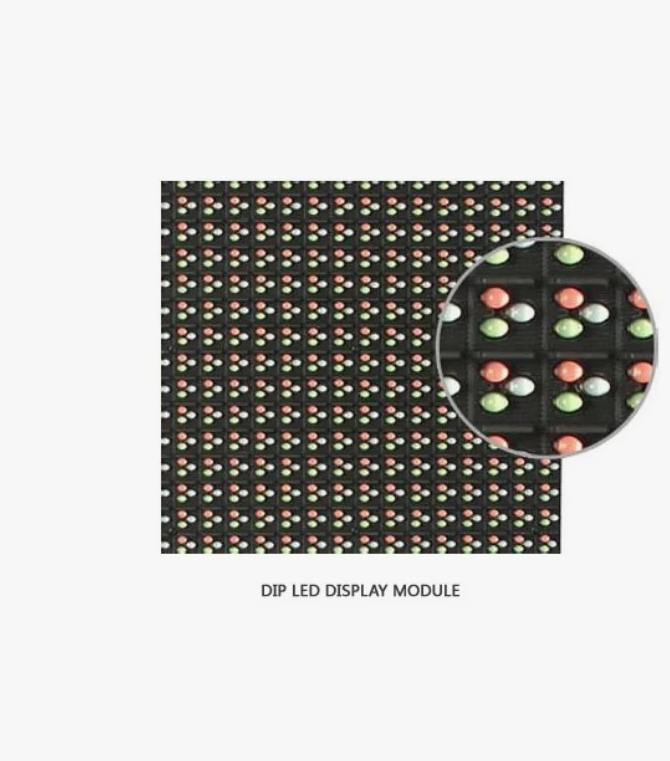
1. DIP LED Screen (Dual In-line Package)
The DIP LED screen is a traditional LED display technology that was first used in outdoor advertising and large displays. Its name comes from the unique packaging form — the dual in-line package.
Features:
- Structure: DIP LED screens use larger LED chips with relatively larger spacing between them. This design allows each LED chip to emit light independently.
- Brightness and Viewing Angle: DIP screens typically offer high brightness, making them suitable for outdoor use under direct sunlight. The large size of the LED chips provides a wide viewing angle, but the relatively low resolution affects the display’s fine details. What is the difference between an indoor LED display and an outdoor LED display?
- Applications: Suitable for outdoor advertising, sports venues, large shopping mall facades, traffic signs, etc.
Advantages:
- Strong anti-interference ability.
- Extremely high brightness, suitable for use in direct sunlight.
- Relatively low cost.
Disadvantages:
- Low resolution due to the large size of the LED chips, which affects the fine details of the display.
- The display is heavy and unsuitable for fine or high-resolution needs.
- The large spacing between LEDs results in lower visual quality compared to SMD and COB displays.
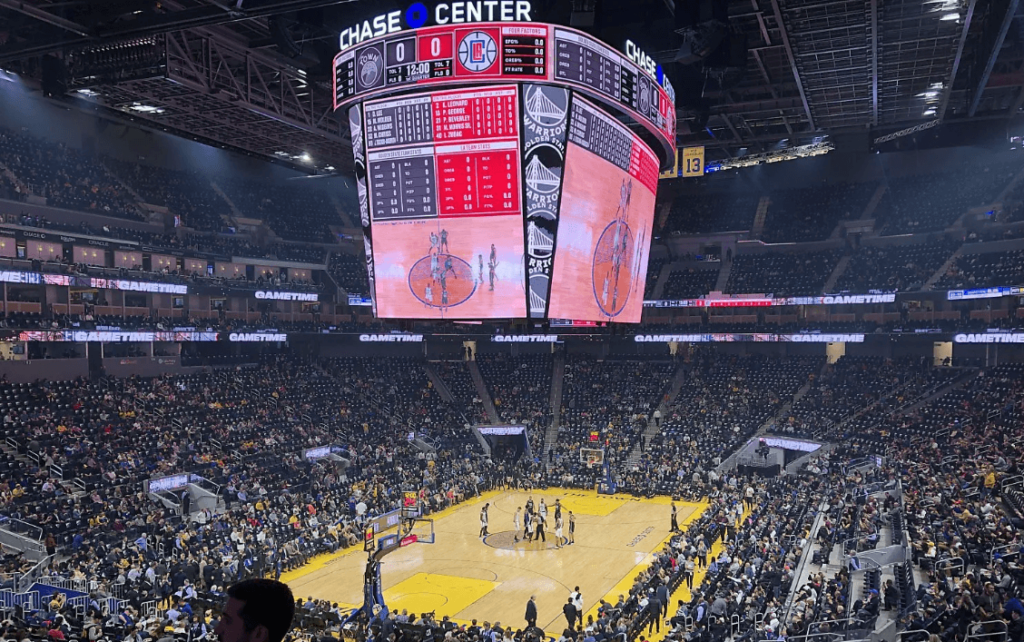
Example: In large sporting events, such as the Olympics and the World Cup, DIP LED screens were widely used on venue facades and billboards due to their high brightness and long lifespan.
2. SMD LED Screen (Surface Mount Device)
The SMD LED screen is currently one of the most common and mainstream LED display technologies. It uses Surface Mount Technology (SMT) to mount LED chips on the surface of the circuit board.
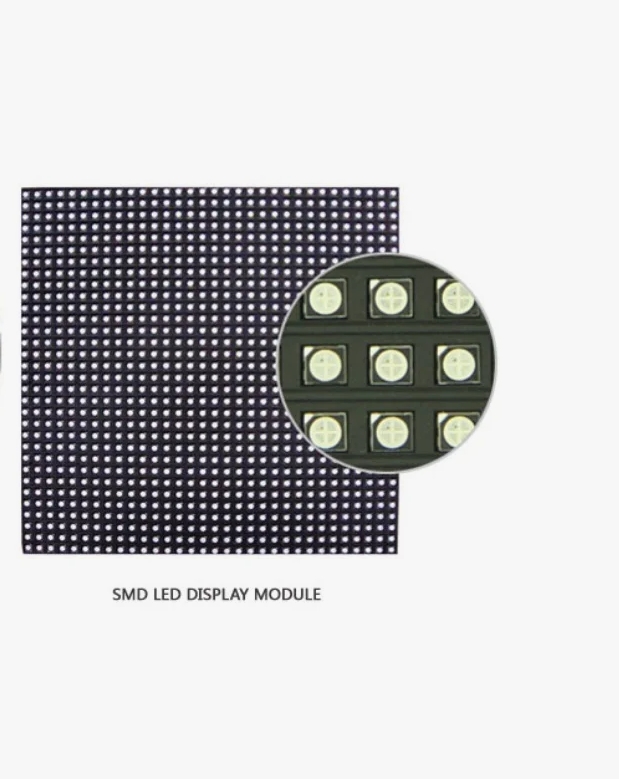
Features:
- Structure: SMD LED screens use smaller LED chips, which are usually arranged on the surface of the circuit board. The smaller spacing between the LEDs enhances the resolution and display effect. Let you understand how LED light beads work.
- Brightness and Display Effect: While SMD screens have slightly lower brightness than DIP, they offer vibrant colors and clear display effects with high resolution.
- Applications: Suitable for both indoor and outdoor advertising, stage backgrounds, commercial displays, traffic indicators, and particularly for scenarios requiring fine display and high resolution.
Advantages:
- Clear display with rich colors.
- Supports high resolution and HD displays.
- Lighter and more suitable for high-precision needs compared to DIP screens.
Disadvantages:
- Relatively lower brightness, which may not be suitable for direct sunlight.
- Higher cost compared to DIP screens.
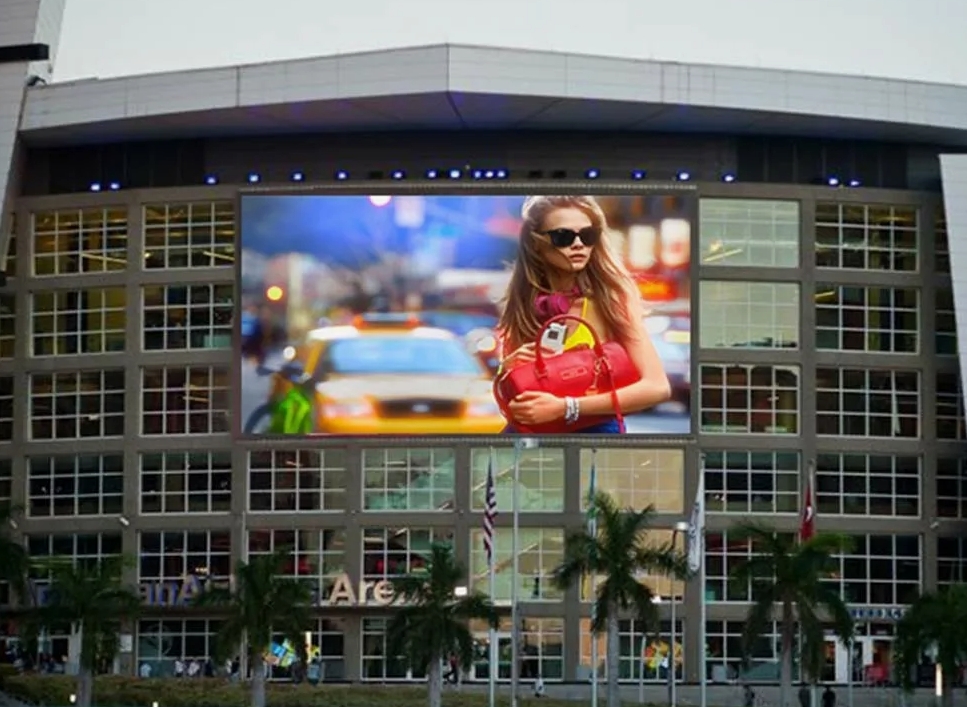
Example: In commercial environments, such as mall advertising screens, bus stop displays, and in-vehicle screens, SMD screens are the mainstream choice due to their high resolution and visual effects.
3. COB LED Screen (Chip on Board)
COB LED screens are an emerging LED display technology that directly mounts multiple LED chips on the same substrate to form a compact, seamless display module.
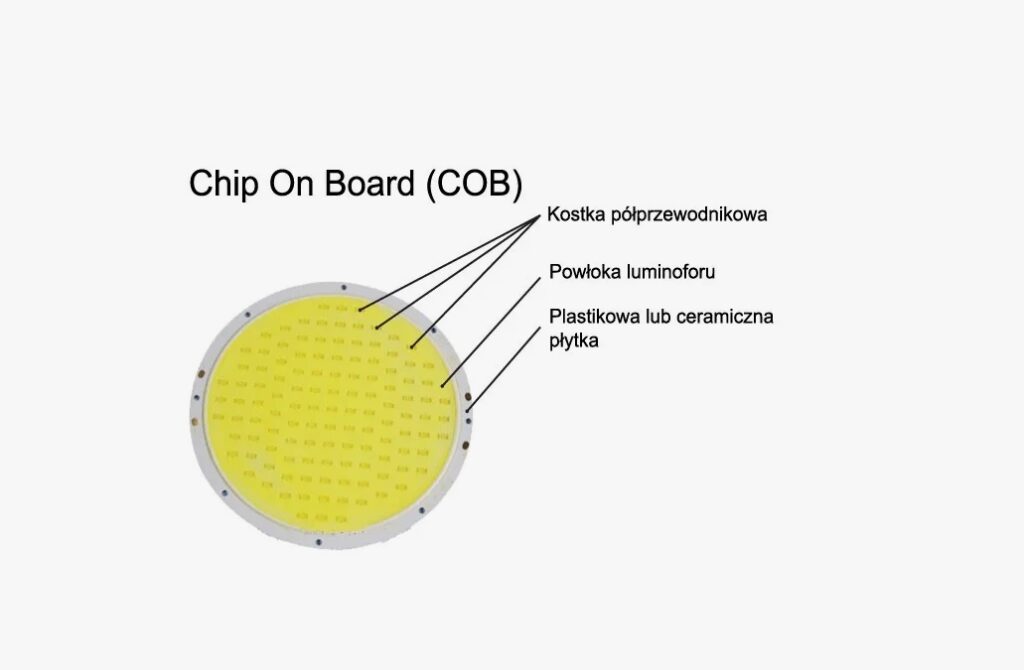
Features:
- Structure: COB LED screens feature a seamless packaging design, with LED chips directly mounted on the substrate, eliminating the soldering points and contact points common in traditional SMD screens, thereby reducing failure rates. Let you understand the difference between CSP and COB LED chips.
- Brightness and Display Effect: COB screens have extremely high brightness and excellent display effects, particularly in terms of detail and color rendering. The packaging design also gives COB displays better shock resistance and longer lifespan.
- Applications: COB screens are ideal for high-end commercial advertising, large-stage displays, live TV broadcasts, and other high-brightness, high-resolution, and stability-demanding environments.
Advantages:
- Extremely high brightness and contrast, with very fine display quality.
- Seamless stitching, reducing viewing angle issues.
- Strong durability and good shock resistance.
Disadvantages:
- Higher technical cost, making them more expensive than SMD.
- Higher production process requirements, with a higher technical barrier.
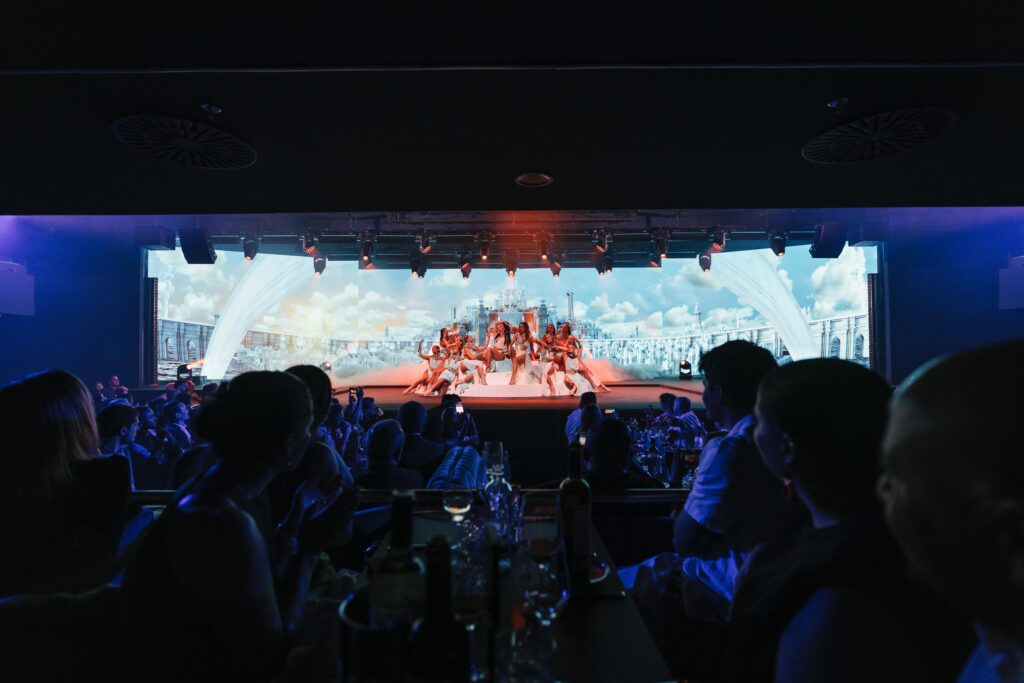
Example: In large concerts and important TV shows, COB screens are widely used for stage backgrounds and live broadcast screens due to their higher resolution and clearer images.
4. Technical Comparison Summary
| Feature | DIP LED Screen | SMD LED Screen | COB LED Screen |
|---|---|---|---|
| Brightness | High brightness, suitable for outdoor use | Moderate brightness, suitable for both indoor and outdoor use | Extremely high brightness, suitable for complex environments |
| Resolution | Low resolution | High resolution | Extremely high resolution |
| Display Effect | Coarse display, suitable for long-distance viewing | Delicate display, suitable for various environments | Finest display, seamless stitching |
| Applications | Large outdoor ads, traffic indicators | Commercial ads, stage displays, indoor/outdoor ads | High-end ads, stage backgrounds, important live events |
| Cost | Low | Moderate | High |
5. Conclusion
COB, SMD, and DIP LED screens each have their distinct characteristics and applications. DIP screens are suitable for outdoor scenarios that require high brightness and long-distance viewing; SMD screens, with higher resolution and better display effects, are widely used in indoor and outdoor advertising, stage backgrounds, and other fields; COB screens, due to their high brightness, high resolution, and seamless stitching advantages, are commonly used in high-end markets and special occasions.
Choosing the right LED display technology depends on practical needs, such as the usage scenario, brightness requirements, display effects, and budget. We hope this article helps you better understand these three display technologies and provides a reference for your decision-making.

